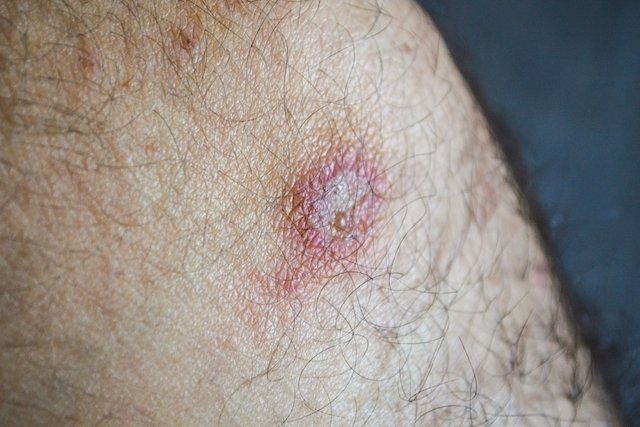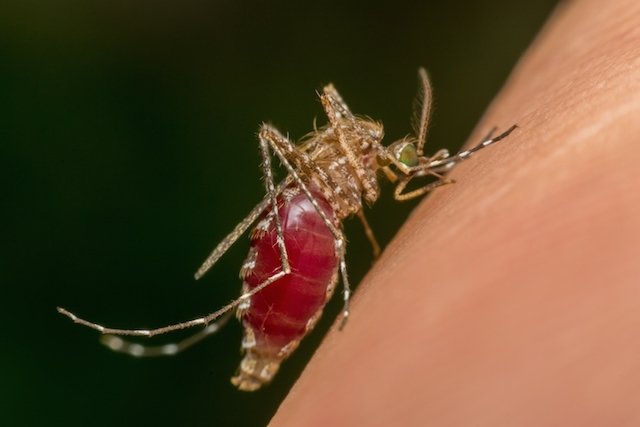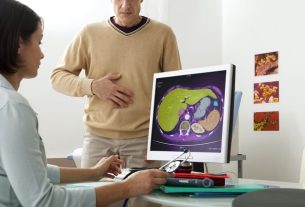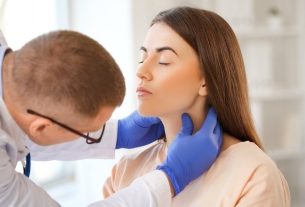Human cutaneous leishmaniasis is an infectious disease caused by protozoan hair Leishmaniawhich causes painless wounds on the skin and mucous membranes of the body.
Tegumentary leishmaniasis, popularly known as “bauru ulcer” or “wild wound”, is the cause of insect bites. Lutzomyia, known as infected sand flies, which normally acquire the parasite by biting carrier animals, such as dogs, cats and rats. Learn more about leishmaniasis.
If leishmaniasis is suspected, it is important that a dermatologist or infectious disease specialist is consulted so that symptoms can be assessed and treatment can be started, which can be done with the use of specific medications.

Main symptoms
The main symptoms of cutaneous leishmaniasis are:
- Skin wound with hard consistency and raised edges;
- Presence of secretion in the wound;
- Slow healing of the wound, which may take 2 to 15 months to heal;
- Swelling and pain in lymph nodes;
- Lumps spread across the body, in some cases;
- Redness and wounds in the mucous membranes of the upper airways, which may have secretions and crusts.
Furthermore, in some cases, in the mucosa of the nose, there may be perforation or even destruction of the cartilaginous septum and, in the mouth, there may be perforation of the soft palate.
Types of cutaneous leishmaniasis
According to the location where the lesions appear, cutaneous leishmaniasis can be classified into two main types:
- Cutaneous leishmaniasiswhen the lesions are present only on the skin;
- Mucous or mucocutaneous leishmaniasiswhen the lesions appear in the mucosa of the upper airways, such as the nose, oropharynx, palates, lips, tongue and larynx, for example.
It is important to identify the type of cutaneous leishmaniasis so that the most appropriate treatment can be indicated by the doctor.
How to confirm the diagnosis
The diagnosis of cutaneous leishmaniasis must be made by a dermatologist or infectious disease specialist by observing the lesions and evaluating the signs and symptoms presented by the person.
However, to confirm the diagnosis, it may be recommended to perform a specific test for leishmaniasis, known as the Montenegro Intradermorreaction test, aspiration test or biopsy of the lesion, to identify the parasite. In some cases, the doctor may also recommend carrying out blood tests, ELISA or PCR.
Make an appointment with the nearest dermatologist so that the diagnosis can be made and the most appropriate treatment can be started:
Taking care of your health has never been easier!
How the treatment is carried out
Tegumentary leishmaniasis lesions normally heal without the need for treatment. However, in the case of wounds that increase in size, are very large, multiply or are located on the face, hands and joints, it may be recommended to treat them with medicines, such as creams and injections, guided by a dermatologist.
The first-choice medications for treating leishmaniasis are pentavalent antimonials, administered in daily doses, intramuscularly or intravenously, for 20 to 30 days. See more details on the treatment for leishmaniasis.
If wounds become infected during the healing process, it may also be advisable to have treatment with a nurse for better care and to prevent the wound from worsening.
Furthermore, after healing, scars may remain on the skin and cause aesthetic changes. Therefore, it may be necessary to undergo psychological counseling or resort to plastic surgery to treat changes to the face, for example.
How to prevent
To prevent the transmission of leishmaniasis, it is important to invest in individual and collective attitudes such as:
- Use repellents when you are in environments where sand flies are found, and avoid exposure during times of greatest mosquito intensity;
- Use fine mesh mosquito nets, as well as placing screens on doors and windows;
- Keep nearby land and backyards clean, removing debris and dirt, and pruning trees, to reduce humidity that facilitates the breeding of mosquitoes and flies;
- Avoid organic waste on the ground, so as not to attract animals, such as rats, which may contain the disease;
- Keep pets out of the house at night to reduce the attraction of mosquitoes and flies to this environment;
- Avoid building houses less than 4000 or 500 meters from the forest.
Furthermore, in the presence of wounds that do not heal easily, and which could indicate this disease, it is important to seek care at a health center so that the causes and appropriate treatment can be identified more quickly.
Bibliography
- MINISTRY OF HEALTH. Cutaneous Leishmaniasis Surveillance Manual. 2017. Available at: <http://bvsms.saude.gov.br/bvs/publicacoes/manual_vigilancia_leishmaniose_tegumentar.pdf>. Accessed on 10 Dec 2020
- CDC. About Leishmaniasis. Available at: <https://www.cdc.gov/parasites/leishmaniasis/gen_info/faqs.html>. Accessed on 10 Dec 2020
- NEVES, David P. Human Parasitology. 12 ed. Athenaeus, 77-78.
- MINISTRY OF HEALTH. Visceral Leishmaniasis: what it is, causes, symptoms, treatment, diagnosis and prevention. Available at: <http://portalms.saude.gov.br/saude-de-az/leishmaniose-visceral>. Accessed on May 30, 2019
- NEVES, David P. Human Parasitology. 12 ed. Athenaeus, 69-88.

Sign up for our newsletter and stay up to date with exclusive news
that can transform your routine!
Warning: Undefined array key "title" in /home/storelat/public_html/wp-content/plugins/link-whisper-premium/templates/frontend/related-posts.php on line 12
Warning: Undefined array key "title_tag" in /home/storelat/public_html/wp-content/plugins/link-whisper-premium/templates/frontend/related-posts.php on line 13





